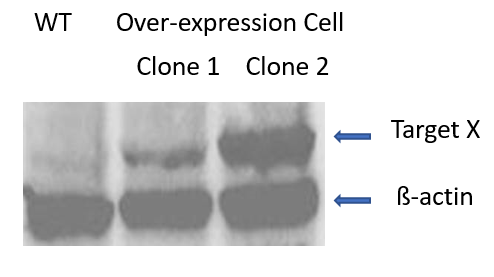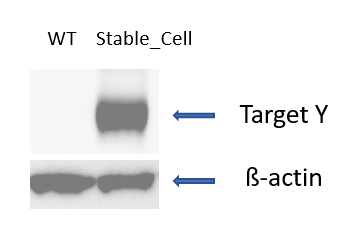OriGene offers a comprehensive range of cell line products for cancer research and therapy development. Our pre-made stable cancer cell lines, suitable for in vivo tumor monitoring and in vitro visualization and immunocytochemistry, are available with Luciferase and/or GFP labeling for enhanced tracking and encompass a variety of tumor types, including breast, liver, pancreas, and colon. These ready-to-use cell lines save researchers valuable time and effort. To investigate the role of specific mutations, Cancer Biomarker Mutant Cell Lines are engineered with mutations commonly found in oncogenes and tumor suppressor genes, such as KRAS and BRAF. These readily available cell lines are invaluable for studying cancer development and targeted therapy effectiveness. OriGene also offers CRISPR-Cas9 stable cell lines, empowering researchers with tools for precise gene editing. Available in various cell types and with diverse selection markers, these cell lines offer flexibility for a wide range of research applications. Finally, for those developing cutting-edge CAR-T cell therapies, we provide luciferase-labeled CAR-T target cancer cell lines. Labeled with firefly luciferase for sensitive detection, these cell lines enable the quantification of cell viability and are essential for assessing the efficacy of CAR-T cell therapies. These diverse stable cell line offerings from OriGene support a spectrum of cancer research needs, from basic biology studies to advanced therapeutic development.
Stable Cell Line Generation
Case Studies: Over-expression in Stable Cell Lines
A human gene (Target X) was cloned into an expression vector () and transfected into mammalian cells. Single colonies were established after 4 weeks of hygromycin drug selection. Western blot using a gene-specific antibody for Target X and β-actin antibody () demonstrates over-expression of Target X in Clones 1, and at a higher level in Clone 2.


A human gene (Target Y) was cloned into an expression vector () and transfected into mammalian cells. Single colonies were established after 4 weeks of hygromycin drug selection. Western blot using a gene-specific antibody for Target Y and β-actin antibody () demonstrates over-expression of Target Y in the stable cell line.


